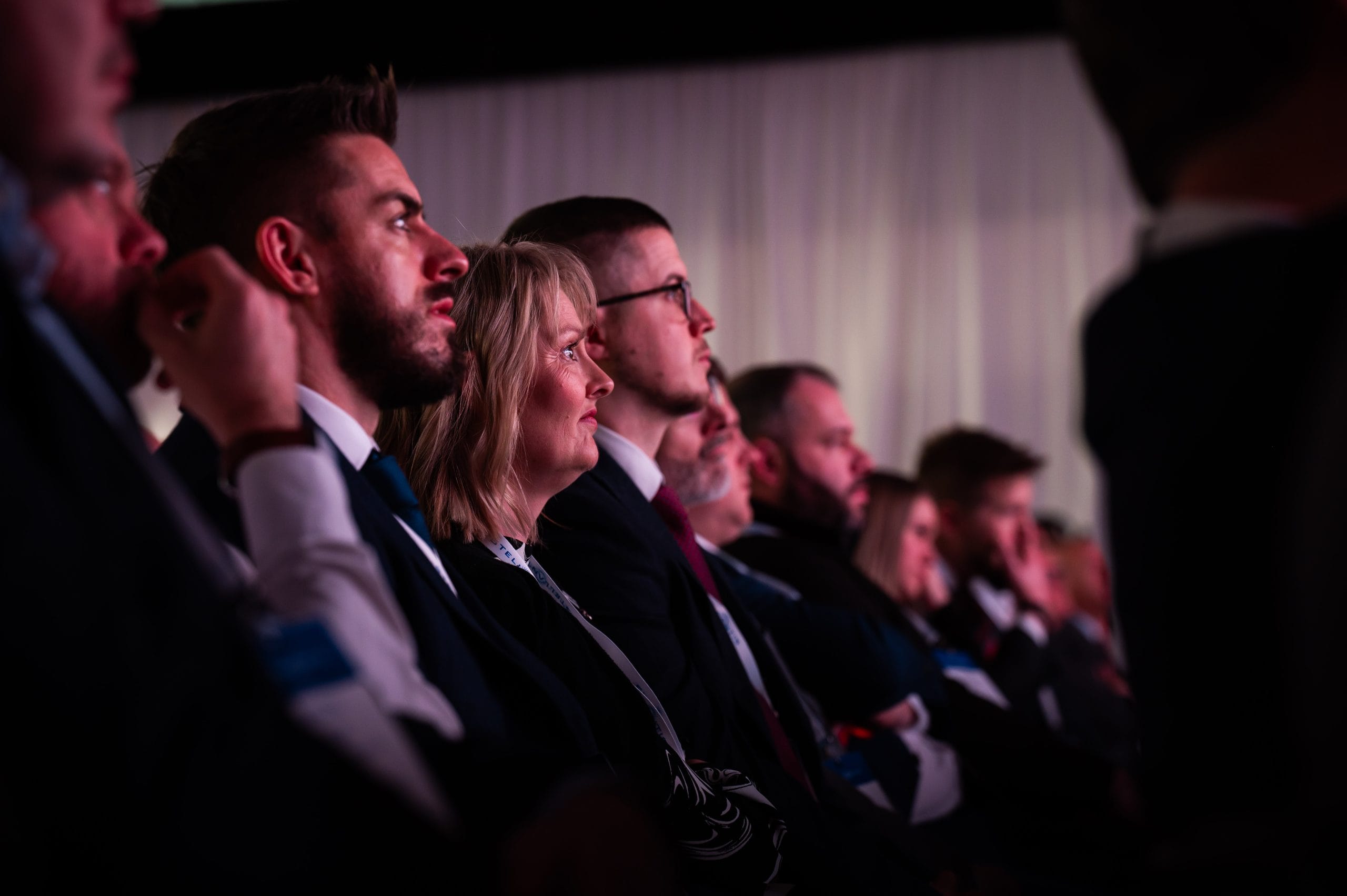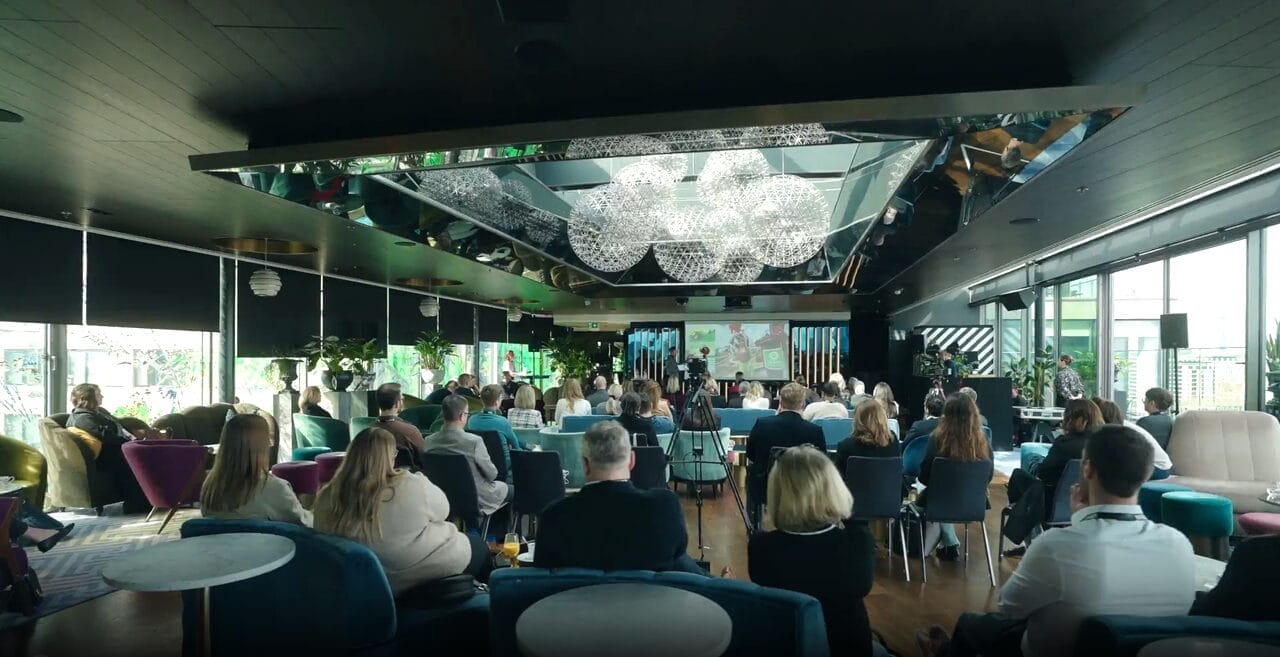
Driving engagement with your people, partners and customers through live events and experiences.
In an era marked by remote work and digital dominance, the sheer volume of digital communication has created an immunity and disconnect to the messages that brands are trying to convey.
So how can brands authentically connect and engage with their people, partners and customers?
We brought together speakers from Clifford Chance, Atom bank, Stellantis, Intel, and scarlettabbott to explore how to reinvent live events and experiences that truly build brands from the inside out.
Find our key takeaways here…
Make Me Care, The Power of Employee Advocacy
Jeremy Petty, CEO of scarlettabbott, discussed the critical role of employee engagement in enhancing organisational performance. He emphasised that employees’ feelings towards their employer significantly influence their work and loyalty. Highlighting the importance of internal brand connection, he advocates for storytelling and authenticity to build a genuine brand culture. Jeremy underscores the necessity of listening to employees for insights and ensuring their wellbeing as foundational for engagement. Through examples like Oxfam and Tommy Hilfiger, he illustrated successful strategies for fostering brand advocacy from within.
The final point in the keynote was the importance of sustained effort in maintaining engagement and advocacy among employees.
“Tell the story, get people excited about it. But then continue that drumbeat of storytelling over the next 6-12 months.”
Strategies for Internal Communications to Engage a Global Audience
Effective internal communication in a global, hybrid, and changing corporate environment requires consistency, inclusivity, and the ability to celebrate past achievements while looking forward. Tailoring messages to different groups, empowering line managers, and using a variety of communication channels are all part of a successful strategy.
Engaging events that honour the organisation’s history can also play a significant role in smoothing transitions during mergers and acquisitions.
“Don’t deny what has been, actually think about celebrating it and help people on the journey throughout.” – Paul Osgood, Clifford Chance.
How to Navigate Budgets while Engaging Internal Audiences and Partners
Overall, the discussion emphasised the importance of creativity, transparency, and strategic planning in overcoming budget challenges while ensuring effective engagement with audiences and partners.
“Keep focusing on the ‘Why’ are you doing that event and get to the point where you are able to articulate that ROI back to the company, even in a time of budget constraints, it’s amazing how you can find pockets of budget that will enable you to do what you’re hoping to do.” – Elaine Cook, Intel
How Important is the New and Evolving Role of the Internal Influencer?
In summary, encouraging employees to champion the brand enhances morale and brand perception through cross-functional influence and specialist networks. Leveraging internal comms strategies and technology for engagement and advocacy creates a cohesive and motivated workforce.
“…the thing that was so so exciting was being in the lift on Monday morning listening to people say, I’m so proud to be a part of this organisation.” – Paul Osgood, Clifford Chance
How to Build a Brand Internally Through Technology & Communication Platforms
These insights highlight the evolving landscape of internal communication, emphasising the need for strategic, inclusive, and engaging approaches to sustain and build brand identity and culture in a digitally connected world.
“Sometimes you’ve got to be cruel to be kind. And that is to say, keep this piece of content exclusively for this channel, and funnily enough, people will watch it, they will get a consistent experience, and Bob’s your uncle.” – Paul Osgood, Clifford Chance
What Internal Communication Strategies are Essential for Effectively Scaling a Business?
An emphasis on the importance of transparent communication, strong leadership, and a supportive culture in effectively managing internal communications during the scaling of a business.
“Have the culture in place and people can make the right decisions… let people find their own way – Elaine Cook, Intel
How to Manage Your People in Times of Change
The discussion emphasised the need for strategic communication, empathetic leadership, and a deep understanding of individual experiences of change. These elements are crucial for maintaining motivation, alignment, and resilience among employees during uncertain times.
“You’ve got to have a leader who is honest, who’s transparent, who you actually believe is invested in the business, and that they’re not just there for a short space of time.” – Andrew Curley, Stellantis
What Metrics Should We Use to Effectively Measure the Success of Internal Branding Efforts?
The conversations underscored the complexity of measuring the success of internal branding efforts, highlighting the need for a mix of quantitative and qualitative metrics. They also stress the importance of investing in measurement strategies to justify and inform ongoing and future initiatives, ensuring that internal branding efforts are effectively contributing to organisational growth and employee engagement.
“…what’s the understanding of the strategy? What’s the view pre-event, during the event, and post-event? Then we can start to tell a story about how we’re not just demonstrating ROI, but taking people on a journey.” – Jeremy Petty, scarlettabbott
How Can We Create Meaningful Connections Internally?
The discussion covered an approach to fostering meaningful connections within the organisation, blending direct involvement from leadership with opportunities for employees to be actively engaged and recognised for their contributions. This combination of commitment from the top down and active participation from the ground up is effective in creating a more connected and motivated workforce.
“Ultimately, the test in training your sales force is… do you hit your sales goals?” – Elaine Cook, Intel
Winning in the World of Incentives
Mike Parrott, Head of Performance Improvement & Incentives, emphasises hyper-personalisation as the key to the future of employee incentives. He highlights that adding AI into the mix changes the game, making it possible to motivate employees more effectively. The future of incentives involves using technology not as a distant overseer but as a personal coach that helps employees understand their progress and what they need to do next, tailored to their individual situations.
This personalised attention is crucial in a world where work and personal life are increasingly blended, and traditional methods of engagement may fall short. By focusing on the individual and employing advanced technology, organisations can significantly boost motivation and performance.
Explore Our Blog
Proud to deliver lasting moments for...

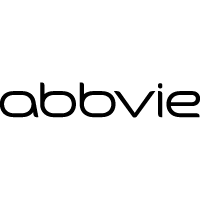




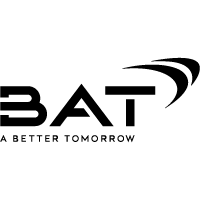
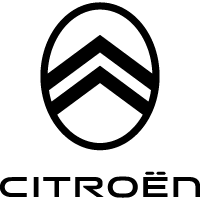



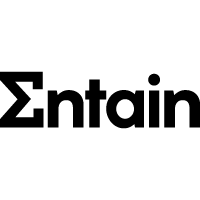







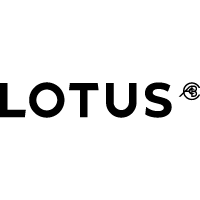






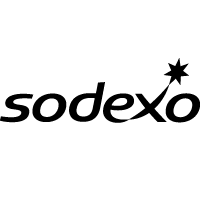
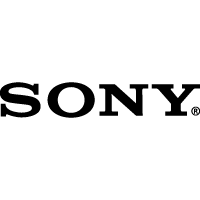





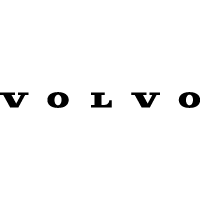







Let’s have
a chat!
Every brand touchpoint is a moment that matters. A chance to strengthen your message with clarity and relevance. To make your audience feel like they're part of something extraordinary, get in touch.




